Battle of Skuodas may refer to:
- Battle of Skuodas (1259), 13th-century Samogitian victory over the Livonian Order
- Battle of Skuodas (1658), a 17th-century battle during the Deluge between Swedish and Lithuanian forces
Battle of Skuodas may refer to:
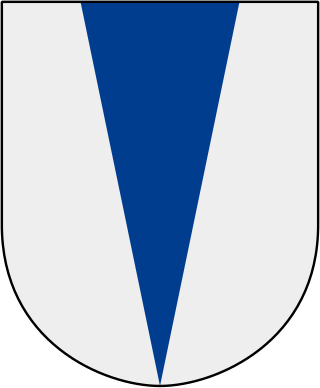
Kil Municipality is a municipality in Värmland County in west central Sweden. Its seat is located in the town of Kil.

Samogitia or Žemaitija is one of the five cultural regions of Lithuania and formerly one of the two core administrative divisions of the Grand Duchy of Lithuania alongside Lithuania proper. Žemaitija is located in northwestern Lithuania. Its largest city is Telšiai, while Šiauliai, where Aukštaitian dialect is being spoken, is sometimes also included into Samogitia. Samogitia has a long and distinct cultural history, reflected in the existence of the Samogitian language.

Klaipėda County is one of ten counties in Lithuania, bordering Tauragė County to the southeast, Telšiai County to the northeast, Kurzeme in Latvia to the north, and Kaliningrad Oblast in Russia to the south. To the west is the Baltic Sea. It lies in the west of the country and is the only county to have a coastline and not be landlocked. Its capital is Klaipėda. On 1 July 2010, the county administration was abolished, and since that date, Klaipėda County remains as the territorial and statistical unit.

The Duchy of Samogitia was an administrative unit of the Grand Duchy of Lithuania from 1422. Between 1422 and 1441 it was known as the Eldership of Samogitia. Since the 1540s the Grand Duke of Lithuania also held the title of Duke of Samogitia, although the actual ruler of the province, responsible to the Grand Duke, was known as the General Elder of Samogitia who was self-elected by the Samogitian nobility.
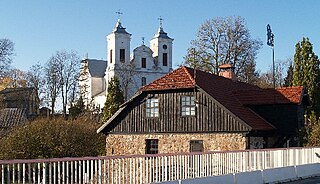
Mosėdis is a small town in Samogitia, northwestern Lithuania in Klaipėda County and Skuodas district. Mosėdis is mostly known for its Rare Stones Museum. The museum and its impressive outdoor collection were started by Vaclovas Intas and have since expanded all over the town. The town also features a Baroque Catholic church built in the 18th century.

Skuodas District Municipality is one of 60 municipalities in Lithuania.

Skuodas is a city located in Klaipėda County, in northwestern Lithuania, on the border with Latvia. The Bartuva river flows through the town. Is currently the capital of Skuodas District Municipality.

The Kingdom of Lithuania was a sovereign state that existed from the 17 July 1251 until the death of the first crowned king of Lithuania, Mindaugas, on 12 September 1263. Mindaugas was the only Lithuanian monarch crowned king with the assent of the Pope and the head of the first catholic Lithuanian state. The formation of the kingdom is widely regarded as a partially successful attempt at unifying all surrounding Baltic tribes, including the Old Prussians, into a single unified state under a common king.

The Battle of Skuodas or Schoden was a medieval battle fought in ca. 1259 near Skuodas in present-day Lithuania during the Lithuanian Crusade. The Samogitian army of 3,000 invaded Courland and on their way back defeated the Livonian Order, killing 33 knights and many more low-rank soldiers. In terms of knights killed, it was the eighth largest defeat of the Livonian Order in the 13th century. This victory led to a Semigallian insurrection against the Livonian crusaders, which lasted from 1259 to 1272.

The Battle of Durbe was a medieval battle fought near Durbe, 23 km (14 mi) east of Liepāja, in present-day Latvia during the Livonian Crusade. On 13 July 1260, the Samogitians soundly defeated the joint forces of the Teutonic Knights from Prussia and the Livonian Order from Livonia. Some 150 knights were killed, including Livonian master Burkhard von Hornhausen and Prussian land marshal Heinrich Botel. It was by far the largest defeat of the knights in the 13th century: in the second-largest, the Battle of Aizkraukle, 71 knights were killed. The battle inspired the Great Prussian Uprising and the rebellions of the Semigallians, the Couronians, and the Oeselians. The battle undid two decades of Livonian conquests and it took some thirty years for the Livonian Order to restore its control.
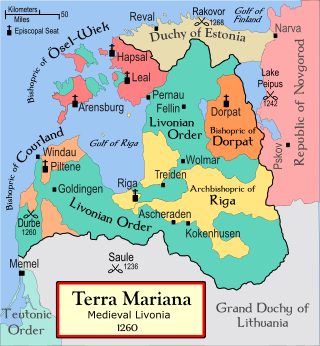
The Battle of Karuse or Battle on the Ice was fought on 16 February 1270 between the Grand Duchy of Lithuania and the Livonian Order on the frozen Baltic Sea between the island of Muhu and the mainland. The Lithuanians achieved a decisive victory. The battle, named after the village of Karuse, was the fifth-largest defeat of the Livonian or Teutonic Orders in the 13th century. Almost all that is known about the battle comes from the Livonian Rhymed Chronicle, which devoted 192 lines to the battle.

Bārta, also named Bartuva, is a river in western Lithuania and Latvia. It originates in the Plungė district, 3 km to north of Lake Plateliai. The Bārta flows in a northwesterly direction, passing through the Skuodas district and the city of Skuodas, before entering Latvia. The Bārta flows into Liepāja lake, which is connected with the Baltic Sea. In its upper courses the valley formed by the Bārta is deep and narrow, while in its lower courses it is much wider.

Apuolė is a historic village in Skuodas district municipality, Lithuania. It is situated some 8 kilometres (5.0 mi) east of Skuodas by the Luoba River. It had a population of 132 according to the 2001 census and 119 according to the 2011 census.
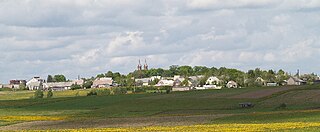
Ylakiai is a town in Skuodas County, in northwestern Lithuania. According to the census of 2011, the town has a population of 950 people.
The Battle of Memel was fought between the Samogitians and the Livonian Order in 1257 near Memel.

Skuodas Manor is a former residential manor in Skuodas, Lithuania.

During the Swedish Deluge on May 18, 1658 near Skuodas, the Hussar Captain Samuel Komorowski fought the unresolved battle against the army of Field Marshal Robert Douglas, who was forced to resign from the attack on Samogitia.
George Skuodas is a British sailor. He competed in the Star event at the 1996 Summer Olympics.
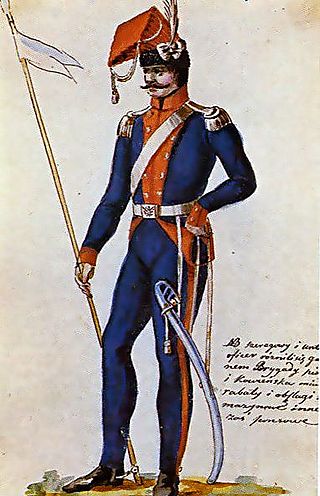
1st Lithuanian National Cavalry Brigade, also known as Hussar or Kaunas Brigade was an 18th-century National Cavalry Brigade of the Grand Ducal Lithuanian Army. It was formed in 1776.